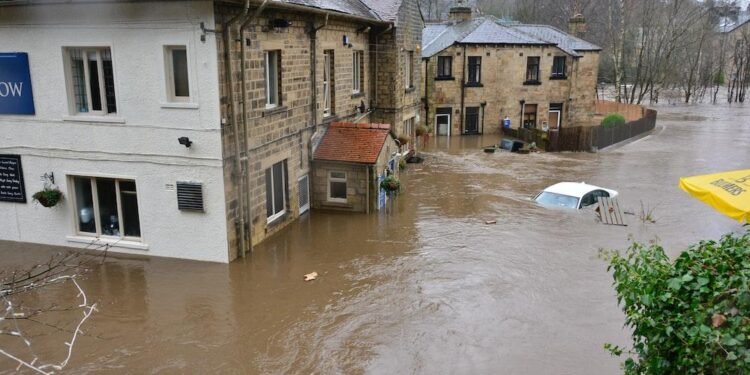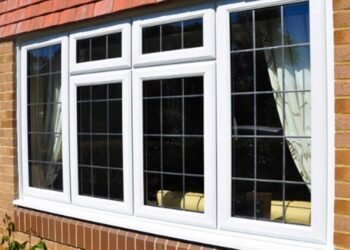Our homes mean so much to us – they are places of comfort, security, and memories. Protecting them from potential damage is incredibly important. This is especially true for homeowners in flood-prone areas, who face unique challenges due to weather and environmental threats.
Atlanta is susceptible to flash flooding, especially during heavy rainfall. This is because several creeks and rivers, such as the Chattahoochee River, flow through or near the city. During significant rainfall, these water bodies can overflow and cause flooding.
Homeowners in Atlanta and other flood-prone areas need to protect their properties from flood damage. But how can they do that? Let’s take a look.
1. Choose the Right Professional Service
If flood damage does occur, it’s important to have a trusted professional service ready to call. Look for an established local company with extensive experience, proper licensing and insurance, and a reputation for quality work. They will be familiar with common issues in your area and can provide fast, effective restoration tailored to your needs.
For example, thousands of properties in Atlanta have a high risk of flooding in the next few decades. To find a professional service near you that can provide solutions for Atlanta’s flood-prone environment, look up Atlanta Water Damage Restoration company near me; the search will connect you with the right local provider who can get your home dried out, sanitized, and restored to pre-flooding condition. Make sure to read reviews and ask neighbors for referrals.
2. Elevate Essential Utilities
Many essential utilities like HVAC systems, water heaters, and electric panels are installed in basements or on the first floor. During a flood, these are highly vulnerable to water damage. Unless they are elevated or relocated before the flood, they can cause major damage to the house and your finances.
Homeowners can move utilities to higher floors or build waterproof enclosures to protect such equipment.
3. Purchase Flood Insurance
Flood insurance is a must for homeowners in flood-prone areas. However, it’s important to know that standard homeowner’s insurance does not cover flood damage, so homeowners must have a separate policy to cover these damages. Flood insurance can cover things like structural damage, furnace and water heater replacement, flooring, and more.
Homeowners can check FEMA’s National Flood Insurance Program as well as contact some private insurers to know the policies. The average flood claim payout is over $50,000, so having insurance can make a huge difference in recovering from flood damage.
4. Install Backflow Valves
Backflow valves (also called backwater valves) act as a gate or door to prevent floodwaters from backing up into the drainage system and entering the home through sinks, toilets, tubs, and drains. They are installed on the main sewer line exiting the home and only allow wastewater to flow out, blocking water from flowing back in. Although backflow valves can be pricey, with installation costs ranging from $300 to $400, they can save tens of thousands in flood damage, so investing in one is worth the money.
5. Waterproof the Basement or Crawlspace
Basements and crawlspaces are common entry points for floodwaters. Homeowners can help protect these vulnerable areas by waterproofing walls, using sealants on cracks and joints, and installing sump pumps. Damp-proofing paints and waterproofing membranes can be applied to exterior foundation walls, and interior drainage systems like French drains and sump pumps help collect water and pump it away from the basement.
Installing a sump pump system is one of the best ways to protect a basement or crawlspace. The pump activates when water collects in the sump basin, discharging it away from the home’s foundation. For the best protection, install a battery backup sump pump in case of power failure during a flood.
6. Landscape for Improved Drainage
Simple landscaping techniques can make a big difference in keeping floodwaters away from a home. Grading soil to create a gentle slope or hill away from the house helps surface runoff drain away. Extending downspouts at least 5 to 10 feet from the home’s foundation also improves drainage. Planting native trees, shrubs, and grasses can help absorb rainfall and reduce localized flooding.
7. Install Perimeter Drainage Systems
Perimeter drainage systems help divert groundwater away from a home’s foundation. They consist of perforated pipes installed around the foundation footer that drain water away through a sloped gravel backfill trench.
Drainage pipes tie into a sump pump system to discharge the water. For best protection, systems should extend 10-15 feet from the foundation.
8. Raise Electrical System Components
One of the most common and serious flood problems is electrical system damage. Homeowners can help avoid this by elevating key components like circuit breaker boxes, meters, switches, and outlets at least 12 inches above the base flood elevation level.
Make sure that the wiring is replaced with waterproof conduit piping in flood-prone areas. Additionally, separate electrical circuits for the upper floors and the basement also help contain system damage.
9. Choose Flood-Resistant Building Materials
When remodeling or rebuilding after flood damage, choose durable building materials that can withstand water exposure. Some good options include stone, brick, concrete, ceramic or clay tile, closed-cell spray foam insulation, metal, and pressure-treated or naturally decay-resistant lumber. Make sure to avoid materials like drywall, insulation, and carpeting on lower levels prone to flooding.
10. Install Permanent Flood Barriers
Permanent barriers like floodwalls and levees can help divert floodwaters away from homes. Floodwalls are free-standing reinforced concrete barriers built parallel to the shoreline, whereas levees are compacted soil embankments that act as dikes. These substantial flood barriers require professional engineering and installation but provide a long-term solution for properties facing repetitive flooding. In some conditions, equipment like multi-diaphragm metering pumps might be used in conjunction with these barriers to manage water flow.
Conclusion
Our homes are some of our most valuable assets – protecting them from flood damage requires diligence and preparation. Homeowners in flood-prone regions can take numerous steps, from proper insurance to utility elevation to landscaping improvements, to help safeguard their properties. Working with damage restoration specialists and having an emergency preparedness plan are also key. Taking proactive measures will help provide peace of mind and financial protection against the threat of inevitable floods.












